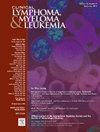家族性多发性骨髓瘤:从流行病学和潜在的种系遗传易感性到临床的见解。
IF 2.7
4区 医学
Q2 HEMATOLOGY
引用次数: 0
摘要
家族性多发性骨髓瘤(MM)是一种相对罕见的疾病。关于家族性MM的流行病学、潜在的种系遗传易感性和临床特征的数据继续扩大,特别是近年来。据报道,在多发性骨髓瘤患者的一级亲属中,多发性骨髓瘤与未确定意义的单克隆伽玛病(MGUS)、其他血液系统恶性肿瘤和几种实体瘤的风险增加了2至4倍。非裔美国人/黑人(OR = 5.52, 95% CI: 1.87-16.28)与欧洲裔美国人/白人(OR = 1.26, 95% CI: 0.75-2.10)相比,MM风险与一级亲属有MM病史之间的关联更强。虽然关于家族性病例的临床特征和预后的资料有限,但初步资料显示家族性病例预后较好。家族性病例的测序研究发现了罕见的致病变异,其中CDKN2A、USP45、MYH14、EPOR、HERC1、KLHL18和KLHDC3是独立群体共有的。其中一些候选基因具有与骨髓瘤发生相关的功能,如b细胞发育、免疫球蛋白基因调控、免疫途径、DNA损伤/修复、泛素化和细胞粘附机制。我们的团队最近完成了对土耳其MM家族的分析,以证实国际联盟的发现。非家族性MM病例与健康对照相比,单核苷酸多态性rs28199的比值比为1.18,家族性MM病例与非家族性MM病例的比值比为2.86。尽管数据不断积累,但大多数问题仍有待解答。未来的研究可能会阐明潜在的生物学机制,并开发多基因风险评分,在预后评估和临床管理方面取得进展。本文章由计算机程序翻译,如有差异,请以英文原文为准。
Familial Multiple Myeloma: Insights From Epidemiology and Underlying Germline Genetic Predisposition to the Clinic
Familial multiple myeloma (MM) is a relatively rare entity. Data on epidemiology, underlying germline genetic predisposition, and clinical features of familial MM continue to expand, especially in recent years. The risk of MM has been reported to be increased by 2 to 4 times among first-degree relatives of MM patients along with monoclonal gammopathy of undetermined significance (MGUS), other hematological malignancies, and several solid tumors by multiple groups. The association between MM risk and having a first-degree relative with a history of MM is stronger among African Americans/Blacks (OR = 5.52, 95% CI: 1.87-16.28) than European Americans/Whites (OR = 1.26, 95% CI: 0.75-2.10). Although data on clinical features and prognosis of familial cases are limited, preliminary data suggest a better prognosis among familial cases. Sequencing studies in familial cases have discovered rare disease-causing variants among which CDKN2A, USP45, MYH14, EPOR, HERC1, KLHL18, and KLHDC3 are shared by independent groups. Some of these candidate genes possess functions related to myelomagenesis such as B-cell development, immunoglobulin gene regulation, immune pathways, DNA damage/repair, ubiquitination, and cell adhesion mechanisms. Our group has recently completed an analysis among our Turkish MM families to confirm the findings of the International Consortium. The odds ratio (OR) for single nucleotide polymorphism rs28199 in nonfamilial MM cases compared to healthy control was 1.18, with an OR of 2.86 in familial MM cases compared to nonfamilial cases. Despite the accumulation of data, most questions remain to be answered. Future studies may elucidate underlying biological mechanisms, and develop polygenic risk scores, leading advancements in prognostic evaluation and clinical management.
求助全文
通过发布文献求助,成功后即可免费获取论文全文。
去求助
来源期刊

Clinical Lymphoma, Myeloma & Leukemia
ONCOLOGY-HEMATOLOGY
CiteScore
2.70
自引率
3.70%
发文量
1606
审稿时长
26 days
期刊介绍:
Clinical Lymphoma, Myeloma & Leukemia is a peer-reviewed monthly journal that publishes original articles describing various aspects of clinical and translational research of lymphoma, myeloma and leukemia. Clinical Lymphoma, Myeloma & Leukemia is devoted to articles on detection, diagnosis, prevention, and treatment of lymphoma, myeloma, leukemia and related disorders including macroglobulinemia, amyloidosis, and plasma-cell dyscrasias. The main emphasis is on recent scientific developments in all areas related to lymphoma, myeloma and leukemia. Specific areas of interest include clinical research and mechanistic approaches; drug sensitivity and resistance; gene and antisense therapy; pathology, markers, and prognostic indicators; chemoprevention strategies; multimodality therapy; and integration of various approaches.
 求助内容:
求助内容: 应助结果提醒方式:
应助结果提醒方式:


